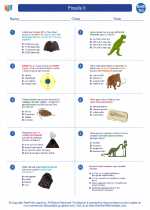Motility in Biology
Motility refers to the ability of an organism or cell to move independently, using its own energy. In biology, motility is a crucial characteristic for various organisms, including single-celled organisms, bacteria, and sperm cells.
Types of Motility
There are two main types of motility: flagellar motility and amoeboid motility.
Flagellar Motility
Flagellar motility involves the movement of an organism or cell using flagella, which are whip-like appendages. Flagella can be found in various organisms, including bacteria, protists, and sperm cells. The movement is achieved through the rotation of the flagella, propelling the organism through its environment.
Amoeboid Motility
Amoeboid motility is characterized by the movement of cells through the extension and retraction of pseudopodia, which are temporary projections of the cell membrane and cytoplasm. This type of motility is commonly observed in amoebas and white blood cells, allowing them to move and engulf particles.
Importance of Motility
Motility is essential for the survival and function of organisms. It enables organisms to seek out nutrients, escape from predators, find mates, and colonize new environments. In the case of sperm cells, motility is crucial for reaching and fertilizing the egg.
Study Guide
- Define motility and explain its significance in biology.
- Discuss the two main types of motility: flagellar motility and amoeboid motility. Provide examples of organisms that exhibit each type.
- Explore the mechanisms of motility at the cellular level, including the role of flagella and pseudopodia.
- Examine the evolutionary advantages of motility for different organisms.
- Compare and contrast motility in unicellular organisms and multicellular organisms.
Understanding motility is crucial for comprehending the behavior and survival strategies of various organisms. It also plays a significant role in fields such as microbiology, cell biology, and reproductive biology.
.


